- Introduction
- History of Saturn
- Composition of Saturn
- The Rings of Saturn
- Moons of Saturn
- Future Exploration of Saturn
- Saturn’s Magnetosphere
- The Great White Spot
- Saturn’s Rotation and Day Length
- Saturn in Culture
- Saturn’s Seasons
- Saturn’s Trojans
- Saturn’s Gravity
- Saturn’s Exploration History
- Saturn’s Ring Composition
- Saturn’s Magnetic Field Reversals
- Saturn’s Moon Titan
- Saturn’s Formation and Evolution
- Saturn’s Icy Moons
- Saturn’s Clouds and Storms
- Saturn’s Moon Enceladus
- Saturn’s Tilt and Seasons
Introduction
Saturn is the sixth planet from the Sun in our solar system and is known for its distinctive rings made up of countless icy particles. It is one of the gas giants, meaning that it is mostly composed of gas, rather than a solid surface. Saturn is also known for its many moons, with over 80 currently identified. In this blog, we will explore various aspects of the Saturn planet, including its history, composition, rings, moons, and future exploration.
History of Saturn
Saturn has been known since ancient times, with the Babylonians observing it around 700 BCE. The Greeks also observed Saturn and named it after their god of agriculture, Cronus. Galileo was the first to observe Saturn with a telescope in 1610, but it was not until later that astronomers realized that the planet had rings. In 1655, Dutch astronomer Christiaan Huygens discovered Saturn’s largest moon, Titan.
Composition of Saturn
Saturn is primarily composed of hydrogen and helium, with small amounts of other elements. It has a thick atmosphere with bands of clouds, similar to Jupiter. Saturn’s atmosphere also contains traces of methane, ammonia, and water vapor. The planet’s internal structure is thought to consist of a rocky core surrounded by layers of liquid metallic hydrogen and helium.
The Rings of Saturn
Saturn is perhaps best known for its rings, which are made up of countless icy particles ranging in size from micrometers to meters. The rings are thought to be relatively young, only about 100 million years old, and are constantly changing as the particles collide and interact with each other. The rings are divided into several main sections, with gaps known as divisions between them. The Cassini spacecraft, which orbited Saturn from 2004 to 2017, provided scientists with unprecedented views and data on the rings, allowing for a better understanding of their composition and dynamics.
Moons of Saturn
Saturn has over 80 known moons, with the largest being Titan, which is larger than the planet Mercury. Titan is of particular interest to scientists because it is the only moon in the solar system with a thick atmosphere, composed mostly of nitrogen and methane. The atmosphere is thought to be similar to what Earth’s atmosphere may have been like billions of years ago, making Titan a potential target for future exploration. Other notable moons of Saturn include Enceladus, which has geysers of water ice erupting from its surface, and Mimas, which has a distinctive impact crater that makes it resemble the Death Star from Star Wars.
Future Exploration of Saturn
Saturn and its moons continue to be of interest to scientists and space agencies, with several missions planned in the coming years. In 2027, NASA’s Dragonfly mission will launch to explore Titan using a drone-like spacecraft. The European Space Agency also plans to launch a mission to explore the icy moons of Saturn, known as the Jupiter ICY moons Explorer (JUICE), in 2022. These missions will provide new insights into the composition and potential habitability of Saturn’s moons.
Saturn’s Magnetosphere
Like Earth, Saturn has a magnetic field, which creates a magnetosphere around the planet. However, Saturn’s magnetosphere is much larger than Earth’s, extending up to 18 times the radius of the planet. The magnetosphere also interacts with the planet’s rings and moons, creating unique phenomena such as auroras and plasma waves.
The Great White Spot
Every few decades, a massive storm known as the Great White Spot appears on Saturn. This storm is similar in size and duration to Jupiter’s Great Red Spot and can last for several months. The storm is thought to be caused by changes in the planet’s atmosphere, but the exact mechanism is still not fully understood.
Saturn’s Rotation and Day Length
Saturn has the second shortest day of any planet in our solar system, after Jupiter. One day on Saturn lasts just 10 hours and 33 minutes. However, despite its rapid rotation, the planet’s atmosphere is relatively calm, with few noticeable weather patterns. This is in contrast to Jupiter, which has much stronger atmospheric winds.
Saturn in Culture
Saturn has played a prominent role in many cultures throughout history. In Greek mythology, Saturn (also known as Cronus) was the god of agriculture and father of Zeus. In astrology, Saturn is associated with discipline, responsibility, and hard work. The planet has also been referenced in numerous works of literature and popular culture, including Dante’s Inferno, H.G. Wells’ The War of the Worlds, and Stanley Kubrick’s film 2001: A Space Odyssey.
Saturn’s Seasons
Like Earth, Saturn has seasons that are caused by its axial tilt. However, because Saturn’s year is much longer than Earth’s (29.5 Earth years), its seasons are much longer as well. In fact, each season on Saturn lasts for around 7 Earth years. The changing seasons can have a significant impact on the planet’s atmosphere and weather patterns.
Saturn’s Trojans
In addition to its many moons, Saturn also has a group of asteroids that share its orbit. These asteroids, known as the Trojans, are located at stable points ahead of and behind Saturn in its orbit. While these asteroids were first discovered in 1990, they are still not well understood, and their composition and origin remain a topic of study for astronomers.
Saturn’s Gravity
Saturn’s gravity is surprisingly complex, with variations in strength and direction depending on the location and mass of nearby objects. These variations can have an impact on the trajectories of spacecraft and can make it challenging to navigate around the planet. However, they also provide scientists with valuable insights into the planet’s internal structure and composition.
Saturn’s Exploration History
Saturn has been explored by several spacecraft over the years, including Pioneer 11, Voyager 1 and 2, Cassini-Huygens, and New Horizons. These missions have provided scientists with valuable data on the planet’s atmosphere, rings, and moons, as well as its magnetosphere and other unique features. Each mission has built upon the knowledge gained by its predecessors, leading to a more complete understanding of this fascinating planet.
Saturn’s Ring Composition
Saturn’s iconic rings are made up of countless small particles of ice and rock. However, the exact composition of these particles is still a topic of study for scientists. Understanding the composition of the rings can provide valuable insights into the planet’s formation and evolution, as well as the dynamics of the Saturnian system as a whole.
Saturn’s Magnetic Field Reversals
Saturn’s magnetic field undergoes periodic reversals, similar to those observed on Earth. These reversals can have a significant impact on the planet’s magnetosphere and the interactions between its magnetic field and other objects in the system. Studying these reversals can provide valuable insights into the internal structure and dynamics of the planet.
Saturn’s Moon Titan
Saturn’s largest moon, Titan, is one of the most intriguing objects in the solar system. It is the only moon with a dense atmosphere, and its surface is covered in lakes and seas of liquid methane and ethane. Titan’s unique environment has led scientists to consider it a potential target for future exploration, including the possibility of sending a probe to explore its surface and search for signs of life.
Saturn’s Formation and Evolution
Saturn’s origins and evolution are still not fully understood, but scientists have developed several theories to explain its formation. Some suggest that the planet formed from a gas and dust cloud that collapsed under its own gravity, while others propose that it formed from the collisions of smaller objects in the early solar system. Studying the composition and structure of Saturn can provide valuable insights into these theories and help us better understand the history of our solar system.
Saturn’s Icy Moons
Saturn has over 80 confirmed moons, many of which are icy and have their own unique features. Some of the most notable icy moons of Saturn include Enceladus, which has a subsurface ocean and geysers of water ice, and Mimas, which has a giant impact crater that gives it a striking resemblance to the Death Star from Star Wars. Studying these moons can provide valuable insights into the history and dynamics of the Saturnian system.
Saturn’s Clouds and Storms
Saturn’s atmosphere is full of clouds and storms, some of which are larger than Earth. The most famous of these is the Great White Spot, a massive storm that occurs roughly once every Saturnian year (about 30 Earth years). Studying these storms can provide valuable insights into the dynamics of the planet’s atmosphere and the forces that drive weather patterns.
Saturn’s Moon Enceladus
Enceladus, one of Saturn’s icy moons, is a particularly intriguing object for scientists. Its subsurface ocean and geysers of water ice make it a potential target for the search for life beyond Earth. Studying Enceladus can provide valuable insights into the conditions necessary for life to exist and the potential habitability of other icy moons and planets.
Saturn’s Tilt and Seasons
Saturn’s axial tilt is responsible for its changing seasons, which can have a significant impact on the planet’s atmosphere and weather patterns. Studying these seasonal changes can provide valuable insights into the dynamics of the planet’s atmosphere and the forces that drive weather patterns.
ScitrchVenture YouTube Channel

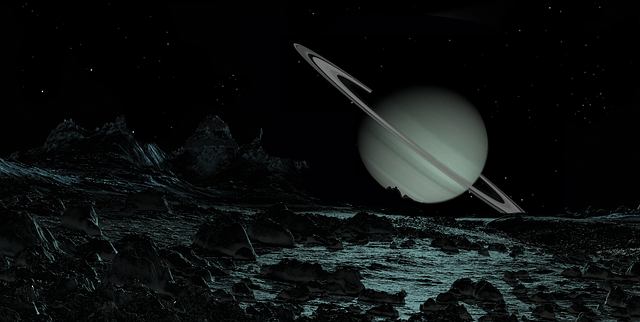
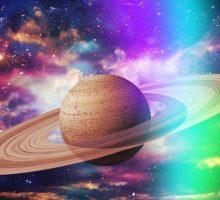
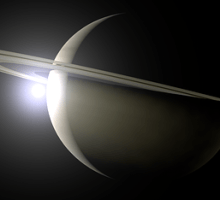
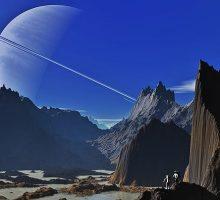
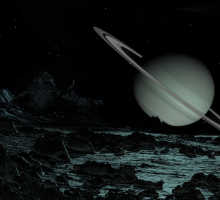
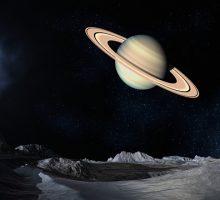




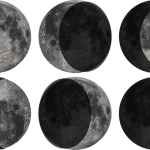

1 thought on “Saturn: Exploring the Wonders and Mysteries of the Ringed Planet”